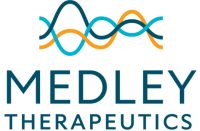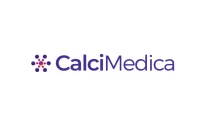Single Intra-Myocardial Intervention with Rexlemestrocel-L Reduced Cardiovascular Death, Myocardial Infarction or Stroke Over Mean Follow-Up of 30 Months in High-Risk Patients with Chronic Heart Failure
NEW YORK, Feb. 27, 2023 (GLOBE NEWSWIRE) — Mesoblast Limited (Nasdaq:MESO; ASX:MSB), global leader in allogeneic cellular medicines for inflammatory diseases, today announced publication of the DREAM-HF Phase 3 trial results in the premier peer-reviewed journal for cardiovascular medicine, the Journal of the American College of Cardiology (JACC). The results of the randomized, double-blind, controlled study in 537 patients showed that Mesoblast’s mesenchymal precursor cell therapy (MPCs; rexlemestrocel-L) strengthened heart function at 12 months, as measured by left ventricular ejection fraction (LVEF) and decreased cardiovascular death, myocardial infarction (MI) or stroke in patients with chronic heart failure (CHF) due to reduced ejection fraction (HFrEF) over a mean follow-up of 30 months.1
DREAM-HF’s lead investigator, Dr. Emerson C. Perin, MD, PhD, FACC, Medical Director at The Texas Heart Institute, said, “The cells appear to work by reducing inflammation, increasing microvascular flow, and strengthening heart muscle. Locally, in the heart, the MPCs can protect cardiac muscle cells from dying and can improve blood flow and energetics. In large blood vessels throughout the body, the reduced inflammation resulting from the activation of MPCs may decrease plaque instability, which is what leads to heart attacks and strokes. The cells seem to have a systemic immune modulatory and anti-inflammatory effect.”
“MPC therapy could change the future of cardiovascular care for patients with heart failure due to inflammation,” according to Dr. Joseph G. Rogers, CEO and President of The Texas Heart Institute and advanced heart failure specialist.
The study enrolled patients across 51 sites in North America and the results showed that a single intra-myocardial injection of 150 million cells of rexlemestrocel-L:
- improved LVEF from baseline to 12 months to a significantly greater extent than controls across all patients with available echocardiograms (p=0.021), with maximal benefit seen in patients with active inflammation as measured by the presence of baseline hsCRP ≥2mg/L (p=0.008)
- reduced risk of MI or stroke by 57% (HR 0.43; 95% CI [0.23, 0.78]) in all treated patients compared with controls
- reduced risk of MI or stroke by 75% (HR 0.25; 95% CI [0.09, 0.68]) in patients with inflammation (baseline hsCRP ≥2mg/L) compared with controls
- reduced risk for time-to-first Major Adverse Cardiac Event (MACE), defined as cardiovascular death, MI or stroke, by 28% (HR 0.72; 95% CI: [0.51, 1.03]) in all-treated patients compared with controls
- reduced risk for time-to-first MACE by 37% (HF 0.63; 95% CI: [0.39, 1.02]) in patients with inflammation (baseline hsCRP≥2mg/L) compared with controls
- did not further reduce the frequency of recurrent hospitalizations for worsening HF symptoms when added to maximal standard of care medicines for heart failure.
“These provocative results may usher in new directions for the field of cell-based regenerative therapies in the coming decade,” stated PV Johnston et al commenting on the DREAM-HF results in a recently published2 review in American Heart Journal Plus: Cardiology Research. “Using the knowledge gained from DREAM-HF along with the trials that preceded it, the potential for breakthrough cell-based therapies for heart failure in the coming decade is immense.”
“We are very encouraged by these study data that indicate the potential of our allogeneic cellular therapy to address the major areas of unmet need in heart failure patients where conventional treatments are not effective,” said Mesoblast CEO Dr. Silviu Itescu. “Improvement in LVEF at 12 months may be a functional surrogate endpoint for rexlemestrocel-L’s subsequent benefits on long-term MACE outcomes and survival in this high-risk patient population with chronic heart failure.”
“These findings suggest an important mechanism of action is the anti-inflammatory effect of MPCs, but perhaps more importantly, these effects are systemic and not limited to their site of delivery in the heart,” added PV Johnston et al. “The results of DREAM-HF suggest those patients with heart failure with preserved ejection fraction (HFpEF) and other cardiomyopathies could potentially benefit from MPC therapy as well. The results of DREAM-HF in this way mirror the prior Cardiothoracic Surgical Trials Network studies of intramyocardial MPCs in left ventricular assist device (LVAD) patients.”
In an earlier randomized, controlled trial in 159 patients with end-stage chronic HFrEF, inflammation and LVAD implantation, a single intervention with rexlemestrocel-L injected directly into the left ventricle at the time of LVAD insertion resulted in significantly reduced cumulative incidence of life-threatening non-surgical major mucosal bleeding events requiring hospitalization through 6 months (GI or epistaxis) compared with controls (p=0.02).
Mesoblast plans to meet with the US Food & Drug Administration (FDA) next quarter under its existing regenerative medicine advanced therapy (RMAT) designation to discuss common mechanisms- of-action across the spectrum of chronic HFrEF patients from NYHA class II/III to those with an implanted LVAD, and potential pathway to marketing approval.
About Chronic Heart Failure
Chronic heart failure (CHF) is characterized by poor heart function resulting in insufficient blood flow to the body’s vital organs and extremities. This condition affects approximately 6.5 million people in the United States and 26 million people globally with increasing prevalence and incidence. CHF patients are commonly classified according to the New York Heart Association (NYHA) categories based on the patient’s physical limitations. Class I (mild) patients have no limitations while Class IV patients (severe/end stage) experience symptoms even at rest.
The mortality rate approaches 50% at 5 years as patients progress beyond NYHA early class II disease in parallel with increasing inflammation in the heart and in the circulation.3,4 Despite recent approvals of new therapies for HFrEF, NYHA class II/III HFrEF patients with inflammation remain at high risk for cardiac death, heart attacks and strokes.
Over 60,000 patients annually in the US progress to end-stage heart failure (NYHA class IIIB/IV) and these patients have a one-year mortality exceeding 50%.5 Use of LVADs in end-stage heart failure patients to improve survival is gaining momentum, with approximately 5,500 LVADs implanted annually in the US.6-8 However, systemic inflammation associated with major life-threatening gastrointestinal bleeding high rates of rehospitalization remain a major obstacle to greater LVADs use.9,10
About Mesoblast
Mesoblast is a world leader in developing allogeneic (off-the-shelf) cellular medicines for the treatment of severe and life-threatening inflammatory conditions. The Company has leveraged its proprietary mesenchymal lineage cell therapy technology platform to establish a broad portfolio of late-stage product candidates which respond to severe inflammation by releasing anti-inflammatory factors that counter and modulate multiple effector arms of the immune system, resulting in significant reduction of the damaging inflammatory process.
Mesoblast has a strong and extensive global intellectual property portfolio with protection extending through to at least 2041 in all major markets. The Company’s proprietary manufacturing processes yield industrial-scale, cryopreserved, off-the-shelf, cellular medicines. These cell therapies, with defined pharmaceutical release criteria, are planned to be readily available to patients worldwide.
Mesoblast is developing product candidates for distinct indications based on its remestemcel-L and rexlemestrocel-L allogeneic stromal cell technology platforms. Remestemcel-L is being developed for inflammatory diseases in children and adults including steroid refractory acute graft versus host disease, biologic-resistant inflammatory bowel disease, and acute respiratory distress syndrome. Rexlemestrocel-L is in development for advanced chronic heart failure and chronic low back pain. Two products have been commercialized in Japan and Europe by Mesoblast’s licensees, and the Company has established commercial partnerships in Europe and China for certain Phase 3 assets.
Mesoblast has locations in Australia, the United States and Singapore and is listed on the Australian Securities Exchange (MSB) and on the Nasdaq (MESO). For more information, please see www.mesoblast.com, LinkedIn: Mesoblast Limited and Twitter: @Mesoblast
References / Footnotes
- Perin EC. Et al. Randomized Trial of Targeted Transendocardial Mesenchymal Precursor Cell Therapy in Patients With Heart Failure. JACC Vol. 81, No. 9, 2023. https://doi.org/10.1016/j.jacc.2022.11.061
- Johnston PV. et al. Dare to Dream? Cell-based therapies for heart failure after DREAM-HF: Review and roadmap for future clinical study. American Heart Journal Plus: Cardiology Research and Practice 13 (2022) 100118. https://doi.org/10.1016/j.ahjo.2022.100118
- AHA’s 2017 Heart Disease and Stroke Statistics
- Ponikowski P., et al. Heart Failure: Preventing disease and death worldwide. European Society of Cardiology. 2014; 1: 4-25
- Gustafsson F, Rogers JG. Left ventricular assist device therapy in advanced heart failure: patient selection and outcomes. European Journal of Heart Failure 2017;19:595-602.
- United Network for Organ Sharing
- Agency for Healthcare Research and Quality – Healthcare Cost and Utilization Project – Claims Analysis ICD- 37.6.
- Data on file
- Chatterjee A, Feldmann C, Hanke JS (2018) The momentum of HeartMate 3: a novel active magnetically levitated centrifugal left ventricular assist device (LVAD). J Thorac Dis 10 (Suppl 15): S1790-S1793.
- Mehra, MR Salerno C, Cleveland JC (2018) Health care resources use and cost implications in the MOMENTUM 3 long-term outcome study: a randomized controlled trial of a magnetically levitated cardiac pump in advanced heart failure.
Forward-Looking Statements
This press release includes forward-looking statements that relate to future events or our future financial performance and involve known and unknown risks, uncertainties and other factors that may cause our actual results, levels of activity, performance or achievements to differ materially from any future results, levels of activity, performance or achievements expressed or implied by these forward-looking statements. We make such forward-looking statements pursuant to the safe harbor provisions of the Private Securities Litigation Reform Act of 1995 and other federal securities laws. Forward-looking statements should not be read as a guarantee of future performance or results, and actual results may differ from the results anticipated in these forward-looking statements, and the differences may be material and adverse. Forward-looking statements include, but are not limited to, statements about: the initiation, timing, progress and results of Mesoblast’s preclinical and clinical studies, and Mesoblast’s research and development programs; Mesoblast’s ability to advance product candidates into, enroll and successfully complete, clinical studies, including multi-national clinical trials; Mesoblast’s ability to advance its manufacturing capabilities; the timing or likelihood of regulatory filings and approvals, manufacturing activities and product marketing activities, if any; the commercialization of Mesoblast’s product candidates, if approved; regulatory or public perceptions and market acceptance surrounding the use of stem-cell based therapies; the potential for Mesoblast’s product candidates, if any are approved, to be withdrawn from the market due to patient adverse events or deaths; the potential benefits of strategic collaboration agreements and Mesoblast’s ability to enter into and maintain established strategic collaborations; Mesoblast’s ability to establish and maintain intellectual property on its product candidates and Mesoblast’s ability to successfully defend these in cases of alleged infringement; the scope of protection Mesoblast is able to establish and maintain for intellectual property rights covering its product candidates and technology; estimates of Mesoblast’s expenses, future revenues, capital requirements and its needs for additional financing; Mesoblast’s financial performance; developments relating to Mesoblast’s competitors and industry; and the pricing and reimbursement of Mesoblast’s product candidates, if approved. You should read this press release together with our risk factors, in our most recently filed reports with the SEC or on our website. Uncertainties and risks that may cause Mesoblast’s actual results, performance or achievements to be materially different from those which may be expressed or implied by such statements, and accordingly, you should not place undue reliance on these forward-looking statements. We do not undertake any obligations to publicly update or revise any forward-looking statements, whether as a result of new information, future developments or otherwise.
Release authorized by the Chief Executive.
For more information, please contact:
| Corporate Communications / Investors | Media |
| Paul Hughes | BlueDot Media |
| T: +61 3 9639 6036 | Steve Dabkowski |
| E: investors@mesoblast.com | T: +61 419 880 486 |
| E: steve@bluedot.net.au | |
| Rubenstein | |
| Tali Mackay | |
| E: tmackay@rubenstein.com | |





